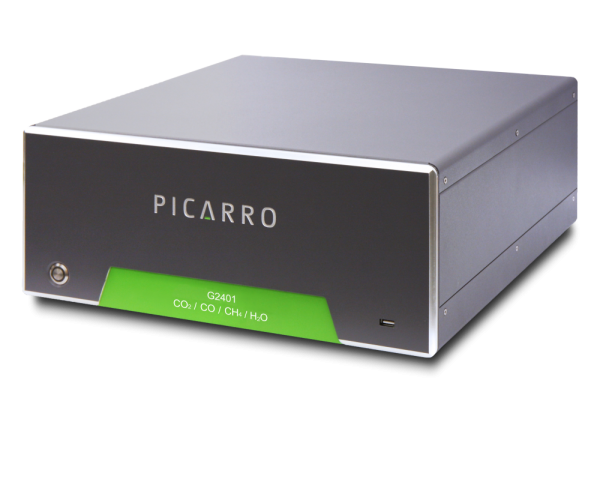Picarro G2401 gas concentration analyzer is a highly advanced instrument designed for atmospheric science, air quality monitoring, and emissions quantification. It provides simultaneous and precise measurements of carbon monoxide (CO), carbon dioxide (CO2), methane (CH4), and water vapor (H2O) concentrations in the atmosphere.
Operating with parts-per-billion (ppb) sensitivity, the G2401 analyzer offers exceptional accuracy and precision for the measured gases, ensuring reliable data collection. The instrument meets the performance requirements set by the World Meteorological Organization (WMO) and the Integrated Carbon Observation System (ICOS) for atmospheric monitoring of CO, CO2, and CH4.
The G2401 analyzer provides simultaneous and continuous measurements of the four trace gases, allowing for real-time monitoring and analysis. It offers exceptionally low drift, ensuring stable and consistent measurements over time.
The precision of the G2401 at different time intervals is as follows: 15 ppb at 5 seconds, 1.5 ppb at 5 minutes, and 1 ppb at 60 minutes for CO; 50 ppb at 5 seconds, 20 ppb at 5 minutes, and 10 ppb at 60 minutes for CO2; and 1 ppb at 5 seconds, 0.5 ppb at 5 minutes, and 0.3 ppb at 60 minutes for CH4. These values indicate the high level of accuracy and precision provided by the instrument for the respective gases.
The maximum drift at standard temperature and pressure (STP) over a 24-hour period is 10 ppb for CO, 100 ppb for CO2, and 1 ppb for CH4. This low drift ensures the reliability and consistency of the measurements over extended monitoring periods.
Similar to the previous models mentioned, the G2401 analyzer also includes water correction software that automatically reports dry gas mole fractions. This feature helps reduce research complexity and consumable costs associated with water vapor measurements.
In summary, the Picarro G2401 gas concentration analyzer offers simultaneous and precise measurements of CO, CO2, CH4, and H2O in the atmosphere. With its high sensitivity, accuracy, low drift, and compliance with international monitoring requirements, it is an invaluable tool for atmospheric science, air quality monitoring, and emissions quantification. The instrument’s ability to provide continuous measurements and automatic water correction further enhances its utility in these applications.

